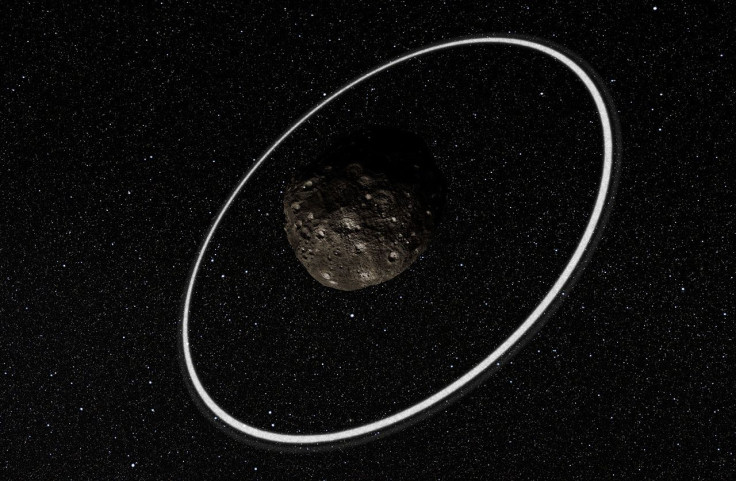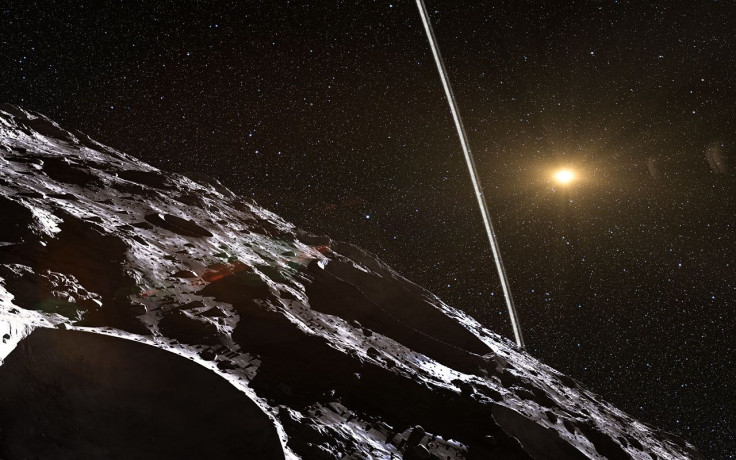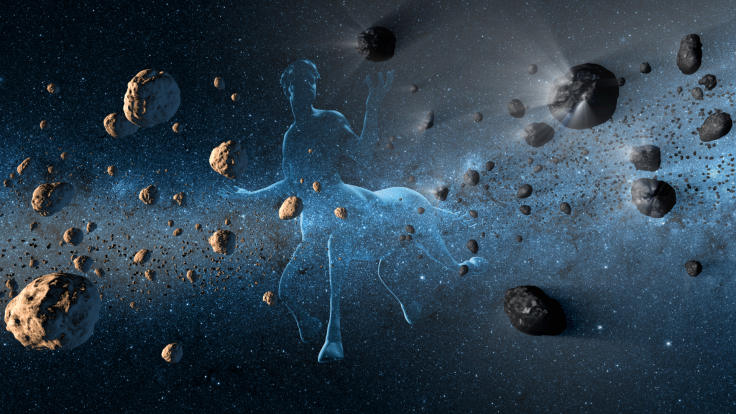Ring Around The Asteroid: Astronomers Discover Asteroid Chariklo Has Two Rings [VIDEO]
Saturn, Jupiter, Uranus and Neptune now have company as astronomers have made a surprising discovery. The asteroid Chariklo, 250 kilometers (around 155 miles) and located 1 billion kilometers from Earth, is the smallest object to have a ring system, and future observations could lead to the discovery of a small moon orbiting the asteroid, reports the European Southern Observatory.

When researchers were observing Chariklo, using the European Southern Observatory’s La Silla Observatory, located in Chile, and other telescopes around the world on June 3, 2013, the astronomers led by Felipe Braga-Ribas, from Observatório Nacional/MCTI, Rio de Janeiro, Brazil, knew the asteroid would occult, pass in front of and block the light from, the star UCAC4 248-108672.
Without any light from the star, the researchers could gain new insight into the size and shape of asteroid Chariklo but never expected to find out it had two rings surrounding it. Braga-Ribas said in a statement, “We weren’t looking for a ring and didn’t think small bodies like Chariklo had them at all, so the discovery — and the amazing amount of detail we saw in the system — came as a complete surprise!”

The two rings are well defined and were discovered when researchers noticed a brief moment when the star's brightness dimmed, before and after asteroid Chariklo passed in front of the star, which meant something was blocking the star's light. Based on the different telescope observations, the researchers were able to determine the size, width and general orientation of the two rings. The rings of Uranus, in 1977, and Neptune, in 1984, were discovered during occultation, reports ESO.
According to the astronomers, the rings are 7 kilometers and 3 kilometers wide and are 9 kilometers apart. The team has nicknamed the two rings Oiapoque and Chuí, after two rivers in Brazil.
Uffe Gråe Jørgensen, from the Niels Bohr Institute at the University of Copenhagen, said in a statement, "I try to imagine how it would be to stand on the surface of this icy object — small enough that a fast sports car could reach escape velocity and drive off into space — and stare up at a 20-kilometer-wide ring system 1000 times closer than the Moon."
Asteroid Chariklo is in orbit between Saturn and Uranus and is classified as a “centaur.” These objects were named as such as they can appear to have traits in common with asteroids and comets. Asteroids are usually found closer to the sun and have regular orbit whereas comets are formed farther away from the sun and also produce a temporary atmosphere, known as a coma, as it heats up while asteroids do not produce a coma.

The researchers are not sure how the rings were formed but believe they were the result of a collision in its past and believe the asteroid may also contain a small moon. The rings could, one day, form into a moon, much like how moons orbiting planets formed as disks and gas and dust merged together to create a planetary satellite.
The research was published in the journal Nature. A video discussing asteroid Chariklo's two rings, courtesy of ESO, can be viewed below.
© Copyright IBTimes 2024. All rights reserved.






















